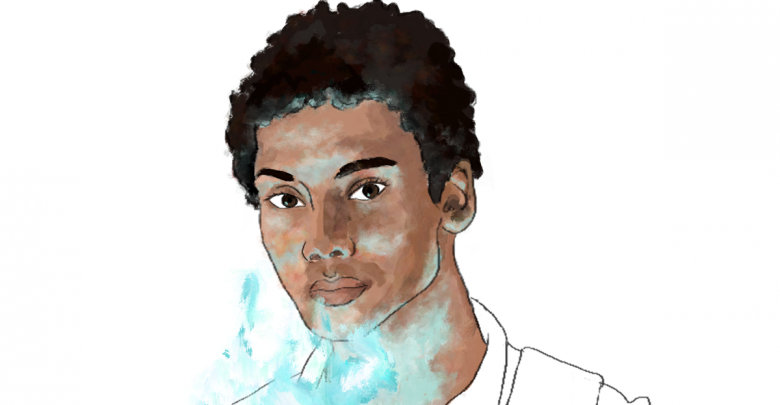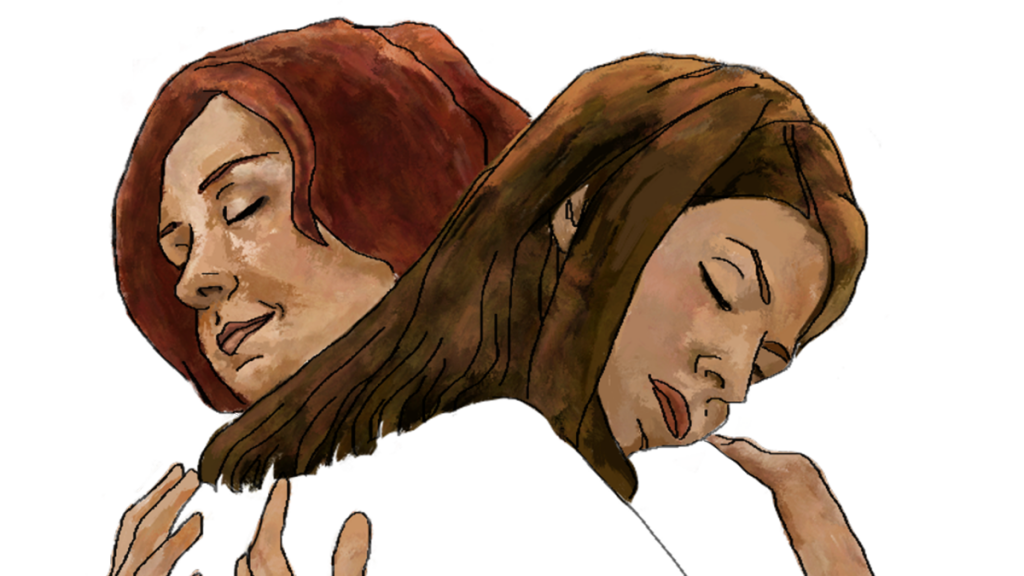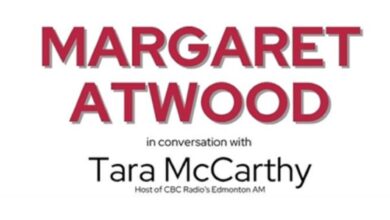Spellbinding sexuality: Witches queer our TVs for the better
 Shelley Tian
Shelley TianLast Halloween, Netflix reminded the world of its supremacy with its instant-hit original series, The Chilling Adventures of Sabrina, a loose adaptation of Archie’s cousin comic that also spawned the 1996 sitcom Sabrina the Teenage Witch. While polar opposites in tone, both adaptations speak to a rise in the popularity of witchcraft.
In the 2018 series, Sabrina has a cousin named Ambrose, a warlock who spends more time lounging in his attic like a chiselled Greek statue than Sabrina spends brewing in her cauldron of teenage angst. Ambrose (played by Chance Perdomo) may look young and hunky, but is really centuries old. Now under house arrest in the Spellman Mortuary, the warlock was once a poet, a revolutionary, and an apprentice of real-life occultist Aleister Crowley. With his wit and sarcasm as coping mechanisms for his lifelong loneliness, Ambrose is truly a warlock for the 2010s.
He’s also openly pansexual, which Perdomo speaks about at length in interviews. Pansexuality is rarely heard of in film and TV, and it’s far from being widely understood. When done right, popular media can demystify misconceptions about terms like this. Fantasy and sci-fi have always explored issues of identity and marginalization, from xenophobia to sexism to exploitation. They can tell stories about a strange-looking “other” without explicit reference to the real alienated groups in our world. And in stories that accept the alien and the supernatural as real, anything is possible.
For a fantasy series grounded in historical reality, Chilling Adventures doesn’t handle the topic of witch hunts with very much depth. We know the story of centuries-long witch trials in Medieval Europe and how witchcraft was condemned in Salem and in some African societies, including the Azande and the Kuranko.
Unlike in the Netflix series, however, people who were accused of witchcraft didn’t actually worship Satan. In Western, Christian cultures, it was women who didn’t comply with Christianity, or who were loud, old, ugly, or unwanted, who were called witches. This was convenient for the patriarchy, but it wasn’t just a way of maintaining the male-dominant social structure. The church really believed that every month, groups of heretics would fly to their diabolical witch meetings, where they praised Satan, ate babies, and committed obscene sexual acts. These suspicions prompted Christians to send people they suspected were witches to trial without evidence. The executions likely weren’t in the millions as some media depictions suggest, but it was still a widespread problem.
Although the medieval witch hunts are long over, traditional attitudes about difference still endanger women and minorities. In response to this, the early 20th century saw a revival of pagan religions. Modern witchcraft, known as Wicca, rejects monotheism, patriarchy, and dogmatic Christian morality. Wiccans have a simple rule: Do what you will, so long as it harms none.
Glen Fairen, a religious studies instructor at the University of Alberta, links this revival to changing attitudes concerning women and sexualities. “As Christianity has been intolerant, traditionally, of queer sexualities,” he says, “Wicca has been more tolerant, both because [Wiccans] tend to be more inclusive, and also as a way to define themselves as not being Christian.”
To Fairen, the Wiccan moral code “makes sense.” “There’s no reason [for Wiccans] to be against queer sexuality or different gender identities,” he says.
In keeping with the Wiccan worldview, witchcraft in popular media today puts women in empowering positions. “In fantastical literature, with witchcraft and things, we are having this sort of inversion of tropes,” Fairen says. Traditional villains take on new roles: “Witches are becoming more positive figures while still being outsiders.”
“That’s what I loved about Harry Potter,” he continues. “The witches are neither good nor evil or Satanic or Christian. They’re not even playing in that field. You see a more broad spectrum of witchcraft [nowadays].”
The High Priestess of supernatural teen drama, Buffy the Vampire Slayer, aired from 1997 to 2003 and was seminal in transforming the face of magic. Buffy Summers went down in history as an ass-kicking feminist icon, but one member of her back-up squad is responsible for witchcraft’s new look on TV.
Willow Rosenberg, the mousy red-headed genius and lover of books and tech, seems like a straight character from the outset. She crushes on her childhood best friend Xander from early childhood, then dates a boy werewolf named Oz. This latter relationship is stable enough, until Oz leaves her because he can’t control his dick — I mean, his inner wolf.
Meanwhile, she experiments with magic little by little until it becomes an integral part of her identity. She realizes how powerful she can be and joins a Wiccan club in college to hone her skills. That’s where she meets Tara.
A sweet and quiet relationship forms between Willow and Tara. It grows into something more intimate after weeks of staring into each other’s eyes while practicing spells. Then the super gay subtext rapidly becomes text.
“[Willow and Tara’s romance] normalized [homosexuality] for a lot of people, especially considering when the show came out,” Fairen says. “Willow is this heroic figure who was openly gay and wasn’t defined by her sexuality. There was nothing strange about it, and she happened to be a witch.”

Fairen believes Willow’s involvement with the Wiccan community made this a smooth coming-out story. “I think if she were a Christian mystic, for instance, that would’ve been a problem.”
Not only is it unusual to have Willow and Tara, two queer characters in a relationship, as series regulars, but they’re also essential characters. The cherry on top: it’s not just a phase!
It’s common for the sexuality of bisexual characters to be used as a plot device, introduced for only one or two episodes. These characters get flippant treatment, often given same-gender love interests to spice up the plot. By the end of the episode, the relationship ends and the character boards the next train to Heteropolis or Gayville. This is a problem you see everywhere called “containment.” It happens when writers introduce a nugget of social progress on TV only to rip the rug out from under you. They do have to make money, after all.
Buffy was by no means a perfect remedy for this. The show’s writers tiptoed around bisexuality, clarifying any confusion about Willow with the simple statement: “She’s gay now.” She always asserted that she’d gone gay, never to return to men again. Almost like a magical spell, her straightness was… transfigured into a rainbow.C
This raises some questions about the fluidity of sexual orientation. Is your attraction determined in early life, never to change but by choice? Some argue sexual orientation can be fluid, others say it’s always in flux, and some say that such notions don’t help the LGBTQ community’s cause.
You can apply any of these points of view to how you watch the story of Willow Rosenberg. You might say she was bi all along, that she falls for people’s souls, or that she’s a fictional character who’s a product of the 90s and their mildly bi-phobic writers.
Buffy scholar Em McAvin thinks that despite total absence of the term “bisexual” in the show, the sexuality “appears as ruptures in the coherence of the hetero or homo subject.” In other words, Willow doesn’t need to say she’s bi because the harmony between her romantic past and present — the validity that the series grants both her straight and gay relationships — is enough. It’s a statement that hetero and homo aren’t the only ways to go.
Over two decades later, Willow is still important. If her seven-year journey can tell us one thing for sure about sexuality, it’s that bisexuality is still mystifying. It has been labelled fraudulent by both straight and gay communities, and associated with skankiness and indecision, among other stereotypes. Because it’s not always a balanced, 50/50 attraction to men and women, it can be frustrating to explain. Like magic, it’s shrouded in mystery. But love is powerful and comes in endless shapes.
Changes in discourse about queer sexuality since the 90s are reflected in The Chilling Adventures of Sabrina. We can look to Ambrose, this generation’s magical TV sidekick, for much more candid and intersectional representation.
Ambrose represents fourth wave feminism, which is a recent resurgence that uplifts all disempowered identities, proudly puts names on the unfamiliar, and encourages us to speak out against abusers in a digital age that facilitates social revolution. In the late 2010s, we welcome labels for self-identification, not to divide social groups but to form communities and validate individual realities that were previously invalidated.
Chilling Adventures reminds us, 20 years after Willow, that visual media still has an important job to do. As the most accessible medium for storytelling right now, TV has to help us better understand the world we live in and the people who live in it. Fantasy has a special voice for this, with its witches and monsters and other freaks re-shaping our perceptions of who should be accepted and what is possible. All the stories we consume — magical or not — should look like that.




